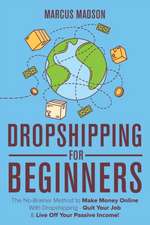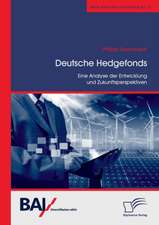Handbook of Construction Safety, Health and Well-being in the Industry 4.0 Era
Editat de Patrick Manu, Gao Shang, Paulo Jorge Silva Bartolo, Valerie Francis, Anil Sawhneyen Limba Engleză Hardback – 12 mai 2023
Preț: 1118.46 lei
Preț vechi: 1363.98 lei
-18% Nou
214.01€ • 224.05$ • 177.08£
Carte tipărită la comandă
Livrare economică 05-19 aprilie
Specificații
ISBN-10: 1032079924
Pagini: 328
Ilustrații: 64 Tables, black and white; 52 Line drawings, black and white; 18 Halftones, black and white; 70 Illustrations, black and white
Dimensiuni: 174 x 246 x 19 mm
Greutate: 0.72 kg
Ediția:1
Editura: CRC Press
Colecția Routledge
Locul publicării:Boca Raton, United States
Public țintă
Academic, Postgraduate, and ProfessionalCuprins
Table of Contents
Chapter 1
The confluence of industry 4.0 and construction occupational safety, health and well-being: An overview
Patrick Manu, Shang Gao, Paulo Jorge Da Silva Bartolo, Valerie Francis and Anil Sawhney
Section One ¿ Industry 4.0 Digital Technologies for Construction OSHW Management
Chapter 2
Construction safety management visualization with 4D BIM
Sajith Wettewa and Bonaventura Hadikusumo
Chapter 3
A conceptual framework for facilitating the integration of information and communication data in BIM-PtD activities
Assrul Reedza Zulkifli, Che Khairil Izam Che Ibrahim and Sheila Belayutham
Chapter 4
Developing Industry 4.0 applications: a social construction of technology approach
William H. Collinge, Carlos A. Osorio-Sandoval, Patrick Manu and Clara M. Cheung
Chapter 5
Safety management of drones in construction
Mostafa Namian and Yelda Turkan
Chapter 6
The safety impetus for the adoption of reality capture for remote virtual site inspections
Tim Law, Leon Yang, Zora Vrcelj, Yuan Miao, Malindu Sandanayake, Bruce Gu and XiaoDong Wang
Chapter 7
Key components of a VR enabled interactive platform to facilitate effective construction risk & safety education
Malindu Sandanayake, Melissa Chan, Zora Vrcelj, Yuan Miao, Tim Law, Jun Zhao, Ayman Mukhaimar and Leon Zhang
Chapter 8
Applying 360-degree virtual reality for construction safety training
Ricardo Eiris and Masoud Gheisari
Chapter 9
Delivering construction safety training and education using immersive learning technology: a state of the art review and future research directions
Minh Tri Trinh, Peng Zhang, Matt Stevens and Yingbin Feng
Chapter 10
Educational game evaluation on smartphones for occupational safety training
Sheyla Mara Baptista Serra, Elder Pita Garcia Padre and Chimay J. Anumba
Chapter 11
Machine learning for safety hazard identification in construction
Carol K.H. Hon, Chenjunyan Sun and Richi Nayak
Chapter 12
Computer vision-based management of construction workers¿ unsafe behaviour
Hongling Guo, Yantao Yu and Zhitian Zhang
Chapter 13
A conceptual framework for behaviour-based safety in the digital era
Brian H.W. Guo and Yang Miang Goh
Chapter 14
Artificial intelligence for occupational health and safety management in construction: a systematic review
Savindi Perera, Vidal Paton-Cole, Shang Gao, Valerie Francis, Pinar Urhal, Patrick Manu, Paulo Bartolo, Clara Cheung, Akilu Yunusa-Kaltungo and Akinloluwa Babalola
Chapter 15
Barriers to big data techniques application in construction safety, health and well-being
Nnedinma Umeokafor and Tariq Umar
Chapter 16
GIS-based health and safety information analysis
David Manase
Chapter 17
Using digital technology to support employees¿ mental health in the construction industry: a systematic review
Zoya Anwar, and Clara Cheung and Jillian Yeow
Chapter 18
Digital technologies and well-being in architecture in the COVID-19 era
Eleni Papadonikolaki, Evangelia Chrysikou, Eleftheria Savvopoulou, Eleni Tsiantou and Christian Klinke
Chapter 19
Risk modelling techniques for occupational safety and health management in construction: a case study of physical industrial assets maintenance
Akilu Yunusa-Kaltungo and Lar English
Section Two ¿ Industry 4.0 Physical Technologies for Construction OSHW Management
Chapter 20
Safety risk factors in the use of construction robots
Abdul-Majeed Mahamadu, Abhinesh Prabhakaran, Patrick Manu, David Caparros Pérez and Mariusz Szóstak
Chapter 21
Application of exoskeletons for occupational safety and health management in construction: a systematic review
Akinloluwa Babalola, Pinar Urhal, Patrick Manu, Paulo Jorge Da Silva Bartolo,
Clara Cheung, Akilu Yunusa-Kaltungo, Savindi Perera, Shang Gao, Valerie Francis, Vidal Paton-Cole
Chapter 22
Towards improved health monitoring in construction with smartwatches
Lesiba George Mollo and Fidelis Emuze
Chapter 23
The digitalization of UK construction labour: wearables and workers, but where is the well-being?
Fred Sherratt, Chris Ivory and Simon Sherratt
Chapter 24
A systematic review of internet of things applications in construction occupational safety and health management
Akinloluwa Babalola, Pinar Urhal, Patrick Manu, Paulo Jorge Da Silva Bartolo,
Clara Cheung, Akilu Yunusa-Kaltungo, Savindi Perera, Shang Gao, Valerie Francis, Vidal Paton-Cole
Chapter 25
Benefits of prefabrication on health and safety in the Australian housing sector
Riza Yosia Sunindijo, Cynthia Changxin Wang and David Haller
Notă biografică
Patrick Manu is a Reader in Project Management at the Department of Mechanical, Aerospace and Civil Engineering (MACE), The University of Manchester. He is a research active academic with international reputation for construction safety and health research, which has underpinned exceptional contribution to knowledge transfer and external engagement in the construction industry, both in the United Kingdom and internationally. He has been involved as principal investigator (PI) and co-investigator in research projects (valued at over GBP £1.8 million) funded by several organisations. He led (as PI) an international consortium in an EPSRC-funded research to develop the first web-based application for assessing design for safety organisational capability, which won an innovation award from HS2 Ltd. He has over 110 publications.
Shang Gao is a Senior Lecturer in the Faculty of Architecture, Building and Planning, The University of Melbourne. Dr Gao has expertise in construction management with a focus on lean construction, safety management, modern methods of construction and digital construction. He has over 40 publications including the book titled Lean Construction Management ¿ the Toyota Way, which is the first book ever published to address the Toyota Way practices in the construction industry to achieve lean construction management. He has also served as consultant to many large construction firms in China and Singapore.
Paulo Jorge Da Silva Bartolo is Professor at Nanyang Technology University (NTU), Singapore, where he is the Executive Director of the Singapore Centre for 3D Printing and Programme Director of the National Additive Manufacturing Innovation Cluster (NAMIC) Hub at NTU. He is also Professor at the Department of Mechanical, Aerospace and Civil Engineering (MACE), University of Manchester (UK); Honorary Professor at Xi¿an Jiaotong-Liverpool University (China) and Collaborator Professor at the Advanced Manufacturing Group at the Tecnologico de Monterrey (Mexico). Paulo Bartolo is Fellow of CIRP (The International Academy of Production Engineering), the world leading organisation in production engineering research, published more than 600 publications (journal papers, book chapters and conference proceedings), co-edited 22 books and holds 16 patents. Throughout his career, Paulo Bartolo secured more than S$90M external funding as PI and Co-I. Elsevier-Stanford University ranked him among the top 2% researchers in the world as most highly cited researchers.
Valerie Francis is a Professor in Construction Management and Chair in Construction within the Faculty of Architecture, Building and Planning at the University of Melbourne. Educated as a civil engineer, she has over ten years¿ experience in commercial, industrial and domestic construction as a senior structural engineer and project manager. Valerie's research has investigated issues affecting construction productivity, procurement, technology adoption, employee satisfaction, construction education, work-life balance and gender equity. Her research work has resulted in the publication of a wide number of industry reports and papers in top tier international journals as well as local Australian journals. Valerie is a recognised expert in the field of work-life balance in the construction. Her study on professional women¿s career progression is the largest study of its nature worldwide and resulted in the development of a career typology for professional women.
Anil Sawhney is the Global Lead for the Construction Sector at the Royal Institution of Chartered Surveyors (RICS). Anil is a construction and infrastructure sector expert, an educator, a researcher, and a ConstructionTech enthusiast. In his role at the RICS, he is involved in producing the construction and infrastructure sector¿s body of knowledge, standards, guidance, practice statements, education, and training. He is also an Adjunct Faculty at Columbia University, Liverpool John Moores University in the UK, and the University of Southern California. Anil has a rich mix of academic, research, industry, and consulting experience gathered in the USA, India, Canada, the UK, and Australia. In 2020, he co-authored a book entitled "Construction 4.0-Innovation Platform for the Built Environment." He is currently the co-editor of the Construction Innovation Journal. Dr. Sawhney serves on the international editorial board of the ICE Infrastructure Asset Management journal and the Journal of Information Technology in Construction.
Descriere
This Handbook seeks to examine and advance current understanding of the confluence of construction health, safety and well-being and the broad range of Industry 4.0 technologies in use in the architecture, engineering and construction (AEC) industry.
Globally, the construction sector accounts for more than 100,000 occupational fatalities annually. In many countries, reports of work-related accidents, injuries and illnesses are commonplace, and there is an urgent need to improve the occupational safety and health (OSH) outlook of the construction sector. The fourth industrial revolution presents opportunities to leverage modern technologies (e.g., big data, artificial intelligence, automation, sensors, AR, VR and robotics) to improve the poor OSH performance of the construction industry. However, embracing such technologies could also induce unintended adverse consequences for the safety, health and well-being of construction workers. Therefore, the realisation of the opportunities as well as the mitigation of potentially adverse consequences requires research-informed holistic insights around the union of Industry 4.0 and construction occupational safety and health management.
This cutting-edge volume addresses a significant gap in literature by bringing together experienced academics and researchers to highlight the drivers, opportunities and drawbacks of the merging of Industry 4.0 with construction health, safety and well-being. After a detailed introductory section which highlights key issues and challenges, section one covers the application of a broad range of digital technologies; then section two discusses the application of industrial production and cyber physical systems in the context of construction safety and health management.
Readers from a broad range of AEC backgrounds as well as safety professionals and technologists will come to understand how the technologies are applied and the resulting OSH benefits as well as potential drawbacks.
















